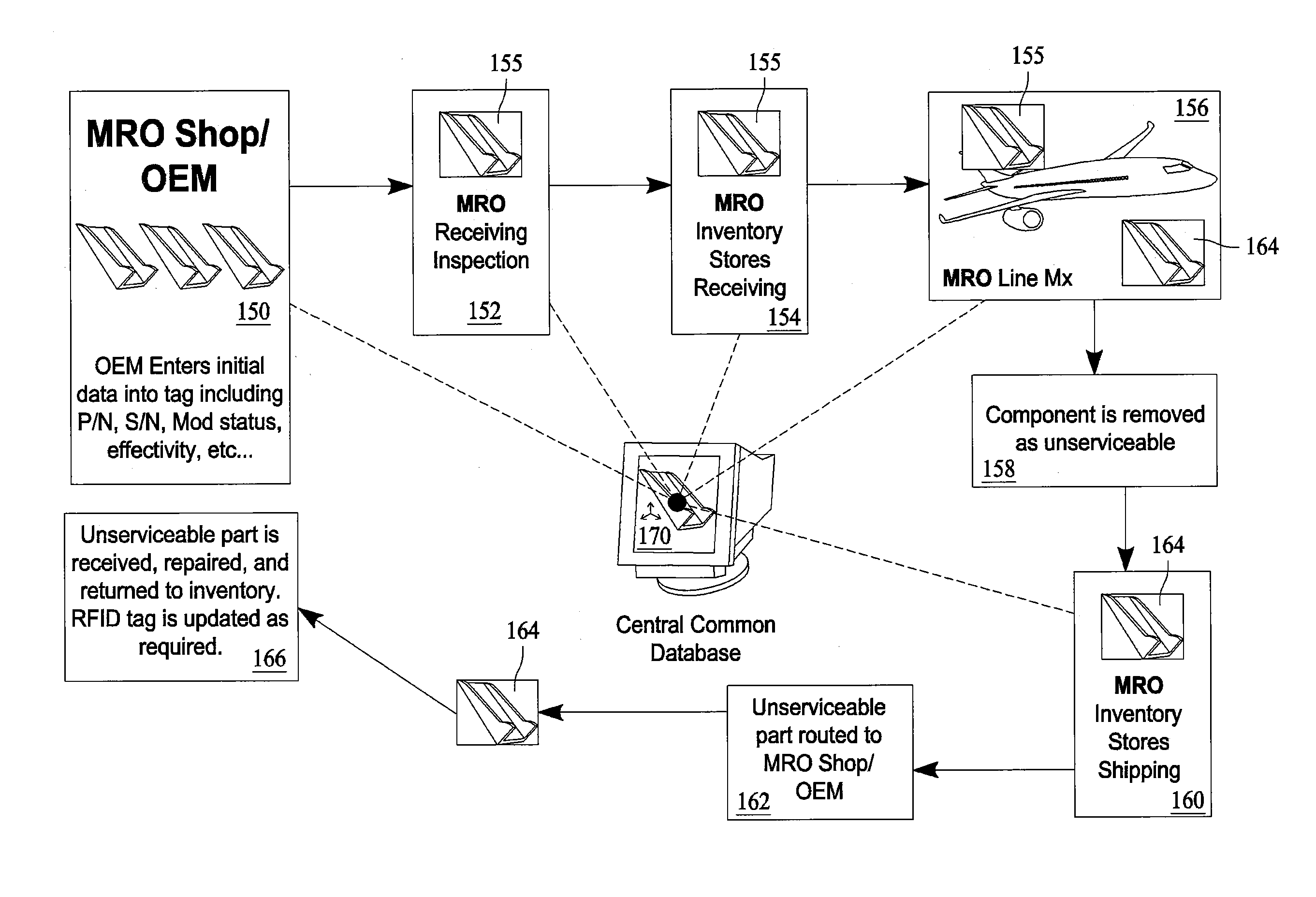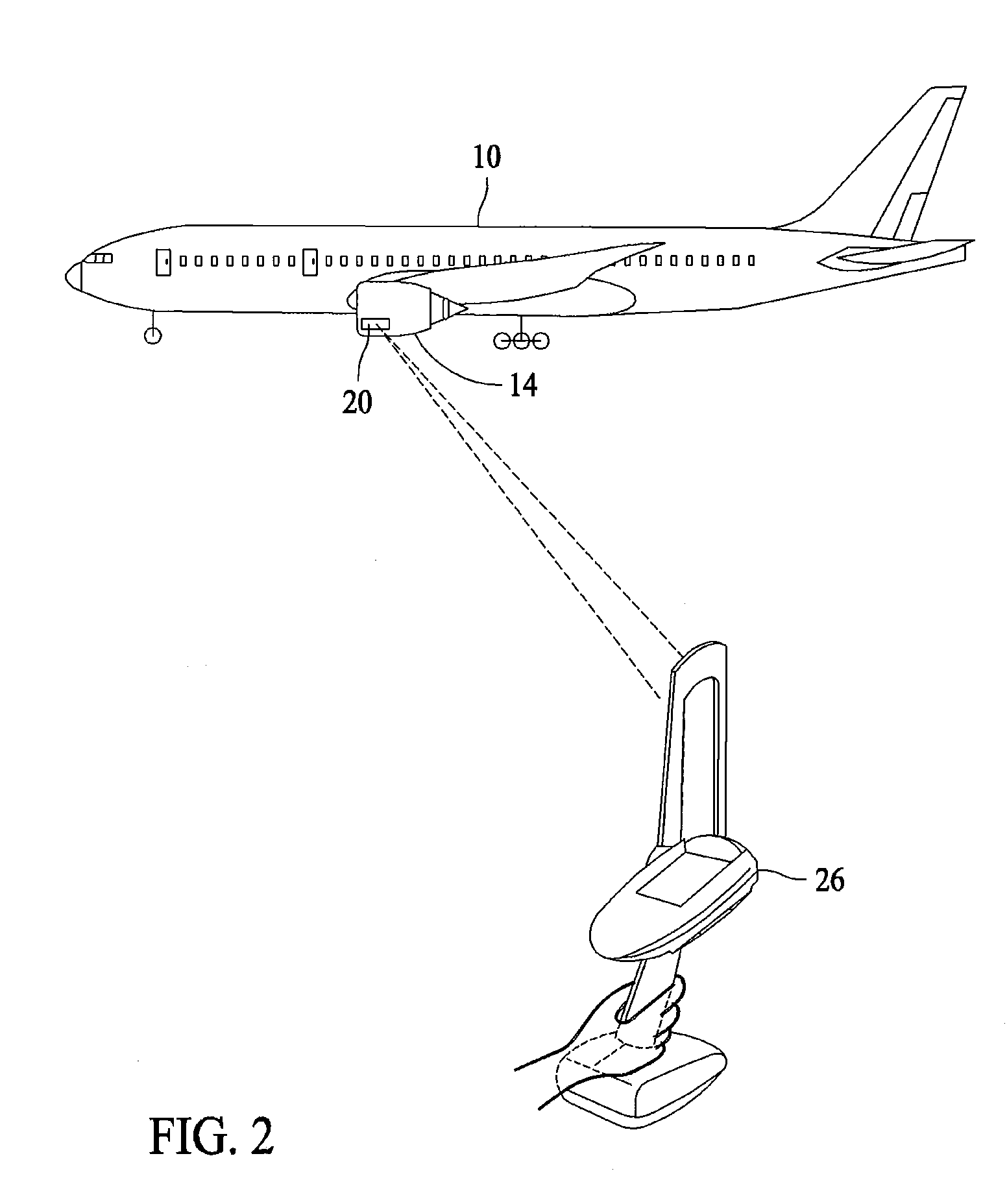System and methods for tracking aircraft components
a technology of aircraft components and tracking methods, applied in the field of radio frequency identification systems, can solve the problems of increasing the difficulty of tracking aircraft parts on a given aircraft, labor-intensive control and verification of aircraft configurations, and errors in determining and recording exact parts of aircraft,
- Summary
- Abstract
- Description
- Claims
- Application Information
AI Technical Summary
Problems solved by technology
Method used
Image
Examples
Embodiment Construction
[0028] Herein described are methods and systems for identifying and facilitating a determination of the existence of, status of, and repair state of component parts of an aircraft utilizing Radio Frequency Identification (“RFID”) technology.
[0029] As further described herein, a system for identifying and determining data relating to aircraft component parts is facilitated by the inclusion of a programmable RFID tag affixed to each relevant component, which includes an antenna with a coil and a transceiver. Each programmable RFID tag is encoded with component part specific information. The transceiver is configured to read and transmit the encoded information concerning the component part upon receiving signals from an external reading and programming device. RFID tags are also sometimes referred to as RFID transponders due to their inherent passive nature and capability to transmit or receive data only in response to query or update requests from RFID query / update devices. In speci...
PUM
 Login to View More
Login to View More Abstract
Description
Claims
Application Information
 Login to View More
Login to View More - R&D
- Intellectual Property
- Life Sciences
- Materials
- Tech Scout
- Unparalleled Data Quality
- Higher Quality Content
- 60% Fewer Hallucinations
Browse by: Latest US Patents, China's latest patents, Technical Efficacy Thesaurus, Application Domain, Technology Topic, Popular Technical Reports.
© 2025 PatSnap. All rights reserved.Legal|Privacy policy|Modern Slavery Act Transparency Statement|Sitemap|About US| Contact US: help@patsnap.com



